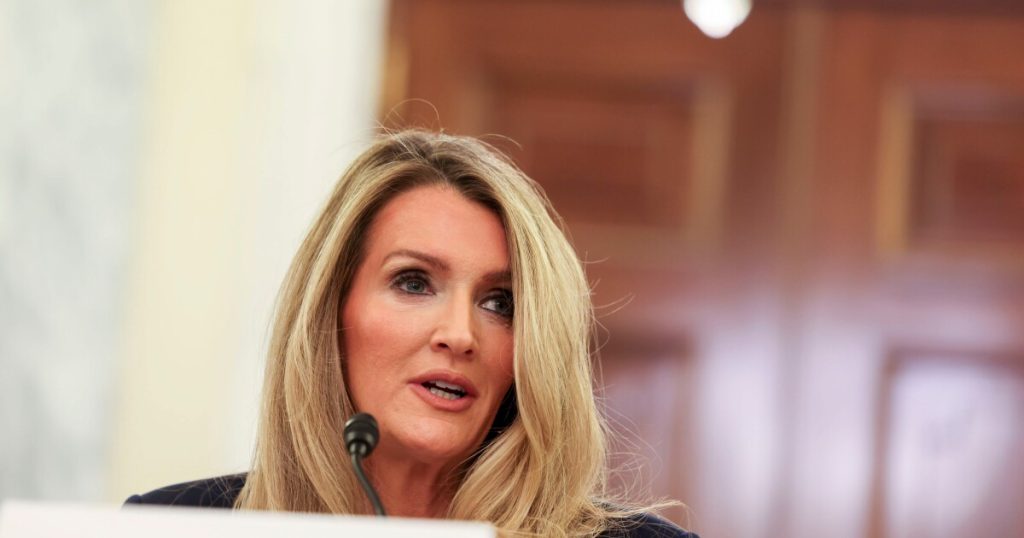Advocates for lenders active in the Small Business Administration’s 7(a) lending program are calling for increased fees and tighter underwriting standards to shore up what they fear is a deteriorating financial situation.
According to the advocates, the 7(a) program, SBA’s flagship, remains on solid financial footing for the present. But they claimed increased levels of problem loans — including a surge in early-stage defaults — combined with the Biden Administration’s decision to waive fees for loans under $1 million have led to a situation where credit costs are outstripping fee revenue.
“Given the current cash flow analysis of the program, the fee waivers set in place by the previous administration are problematic,” Tony Wilkinson, CEO of the National Association of Government Guaranteed Lenders (NAGGL), told American Banker. “We’re counting on the $1 million-plus borrowers to pay for everybody else in the program. That’s just not appropriate and, more importantly, it’s currently not sufficient.”
In July 2024, SBA released a fiscal 2025 fee schedule that waived its annual service, or “upfront” fee, on loans of $1 million or less with maturities exceeding 12 months. Shorter-term loans of $1 million or less pay a fee equal to 0.17% of the loan amount. According to Wilkinson, long-term loans of $1 million or less comprise the majority of 7(a)’s annual loan count. His group is urging new administrator Kelly Loeffler to raise fees to generate much-needed revenue.

“If SBA reversed the previous administration’s fee policy and started collecting fees, we would no longer be in the red — it’s that simple,” Wilkinson said.
NAGGL included the fee recommendation in a nine-page letter it sent Wednesday to new Administrator Kelly Loeffler. Loeffler has yet to respond publicly to NAGGL’s letter, though she pledged Monday that SBA would “review all options to protect the solvency of its lending programs, including revising practices that have jeopardized the zero-subsidy status of programs like 7(a),” in a memo outlining her day one priorities.
The zero-subsidy status, meaning 7(a) credit costs are paid out of fee revenue rather than by a congressional appropriation, is a critical factor determining the program’s long-term integrity, Wilkinson said. “It’s kind of like a math equation,” he said. Absent a national emergency like the pandemic, this program should aim to operate at a zero subsidy. We have to draw a credit box and take positions knowing that’s how this program is going to operate.”
The 7(a) program is SBA’s largest permanent lending program. It provides loan guarantees of 50% to 85% on loans up to $5 million. In fiscal 2024, which ended Sept. 30, SBA approved more than 70,000 loans under 7(a) totaling $31.1 billion. Through Jan. 31, the dollar volume of fiscal 2025 7(a) loan approvals totaled $11.9 billion, up approximately 39% from the same period in fiscal 2024.
SBA implemented a series of major changes to 7(a) in May 2023 intended to update credit standards and boost the number of small-dollar loans. Agency officials, led by former Administrator Isabella Casillas-Guzman hoped increased small-dollar lending would lead to wider access to capital access for women, minorities, veterans and other traditionally underserved groups.
The most controversial change was one that ended a four-decade moratorium blocking new non-depository lenders, designated as small business lending companies, from participating in the 7(a) programs. Since then, SBA has allowed 6 new SBLCs to begin 7(a) lending. Banking advocates continue to loudly criticize the decision to open 7(a) to more SBLCs. At the same time, they’re also seeking to roll back underwriting changes SBA implemented in May 2023 that they’re convinced have contributed to an increase in problem loans and liquidations, instances where SBA has to honor its guarantees to lenders.
Arne Monson, CEO of Holtmeyer and Monson, one of the nation’s largest SBA servicing firms, said loan liquidations handled by his Memphis-based firm are up about 20% from two years ago.
“When you loosen credit standards, 18 months later you’re going to have an increase” in problem loans, Monson said.
Itzel Sims, SBA director and senior vice president at the $8 billion-asset, Searcy, Arkansas-based First Security Bancorp, called on the agency to reinstate a requirement that start-up borrowers, those whose companies are less than two years old, provide a 10% equity injection to qualify for a 7(a) loan. “This requirement better ensures the start-up company has the ability to repay the loan,” Sims stated in written testimony submitted to the Senate Committee on Small Business and Entrepreneurship prior to a hearing Wednesday.
Both Sims and Monson also urged SBA to reinstate a requirement that each loan include a loan authorization memo detailing its terms and conditions. The authorization memo served as a checklist helping ensure deals met the agency’s standards and that their guarantees would be honored if the provisions were met. “The inclusion of a loan authorization in the loan file removed any uncertainty about the conditions applicable to the loan,” Sims stated in her written testimony.
NAGGL cited the equity injection and loan authorization requirements in its Feb. 26 letter to Loeffler, as well as another change making it easier for lenders to use credit scoring on loans of $500,000 or less. Wilkinson said NAGGL warned in previous congressional testimony that SBA’s underwriting changes would result in higher levels of problem loans. “History has proven us correct, unfortunately, in a very short time frame,” he said.

SBA loans point way to growth for this small Georgia bank
According to NAGGL, early-stage 7(a) defaults, those involving loans aged 18 months or less, increased more than 100% between 2023 and 2024. Early defaults totaled 0.69% of loans in the subset at the end of 2023. A year later, at the end of December 2024, the early default rate had jumped to 1.43%. It’s an important indicator because it focuses solely on those loans made since the Biden-Harris policy changes were put into effect, Wilkinson said.
“These early indicators of performance, like early defaults, point to a significant finding,” Wilkinson said.
Loeffler, in her Feb. 24 memo, promised to undertake a “full review of current lending [standard operating procedures].”

